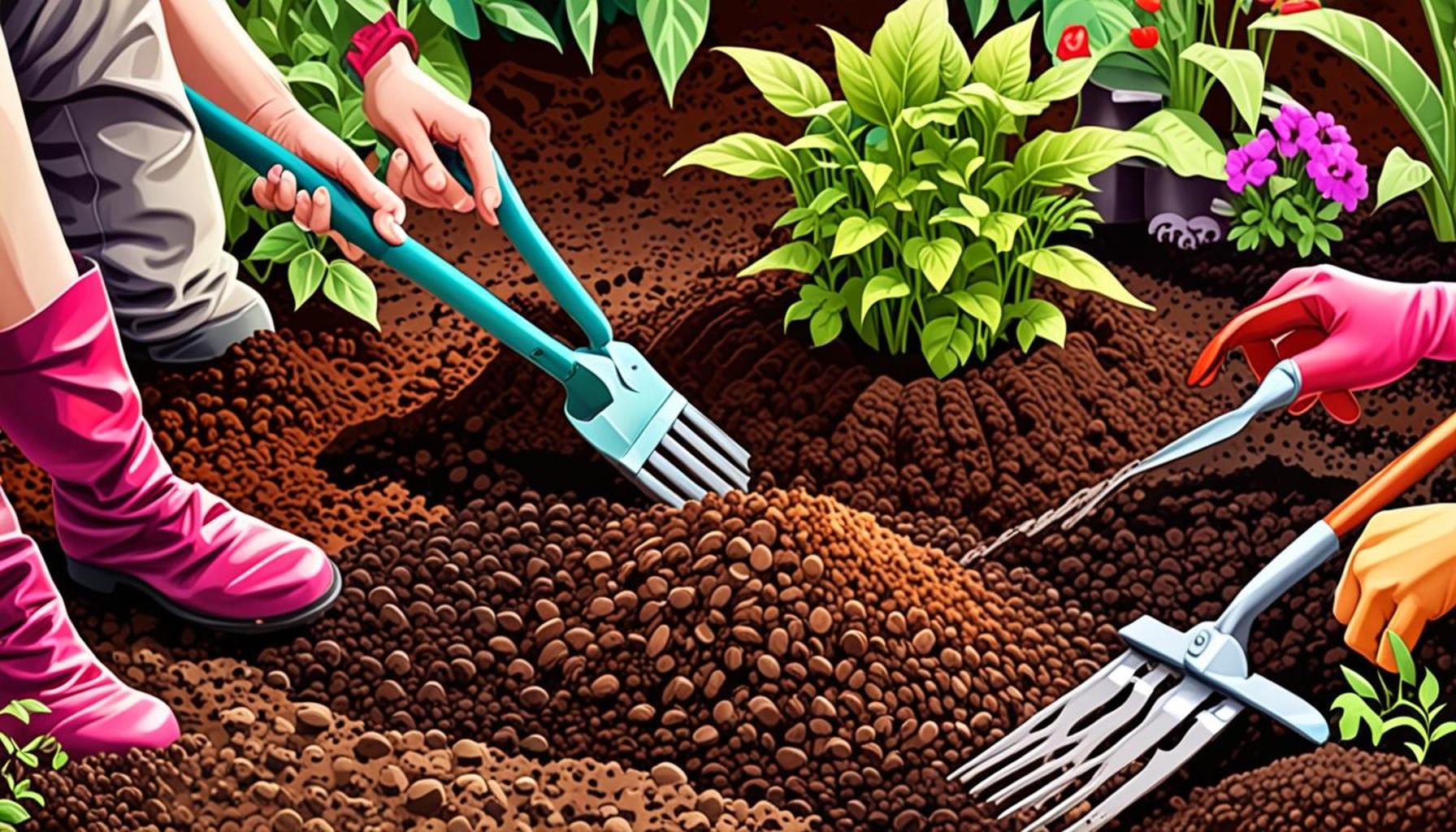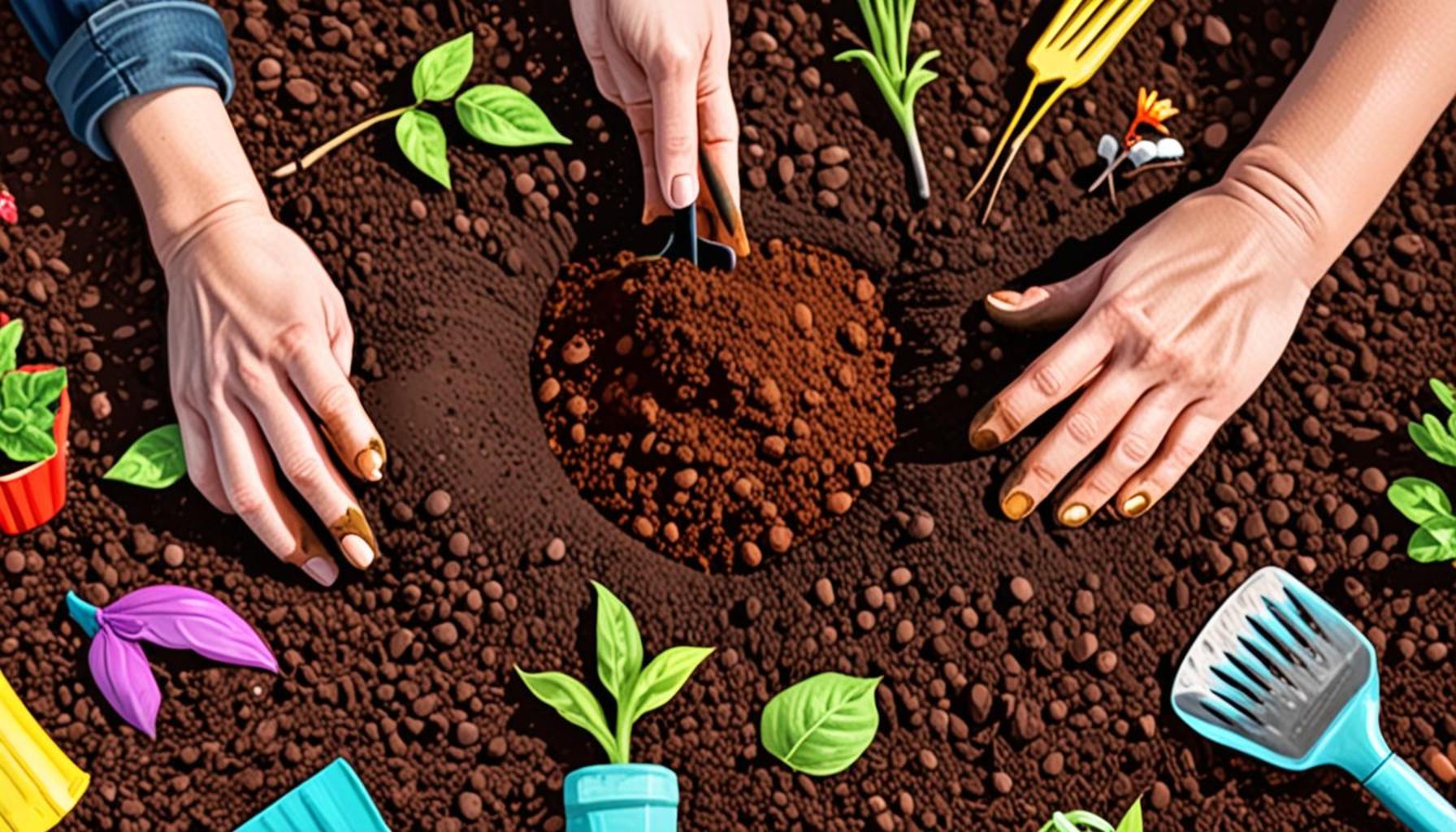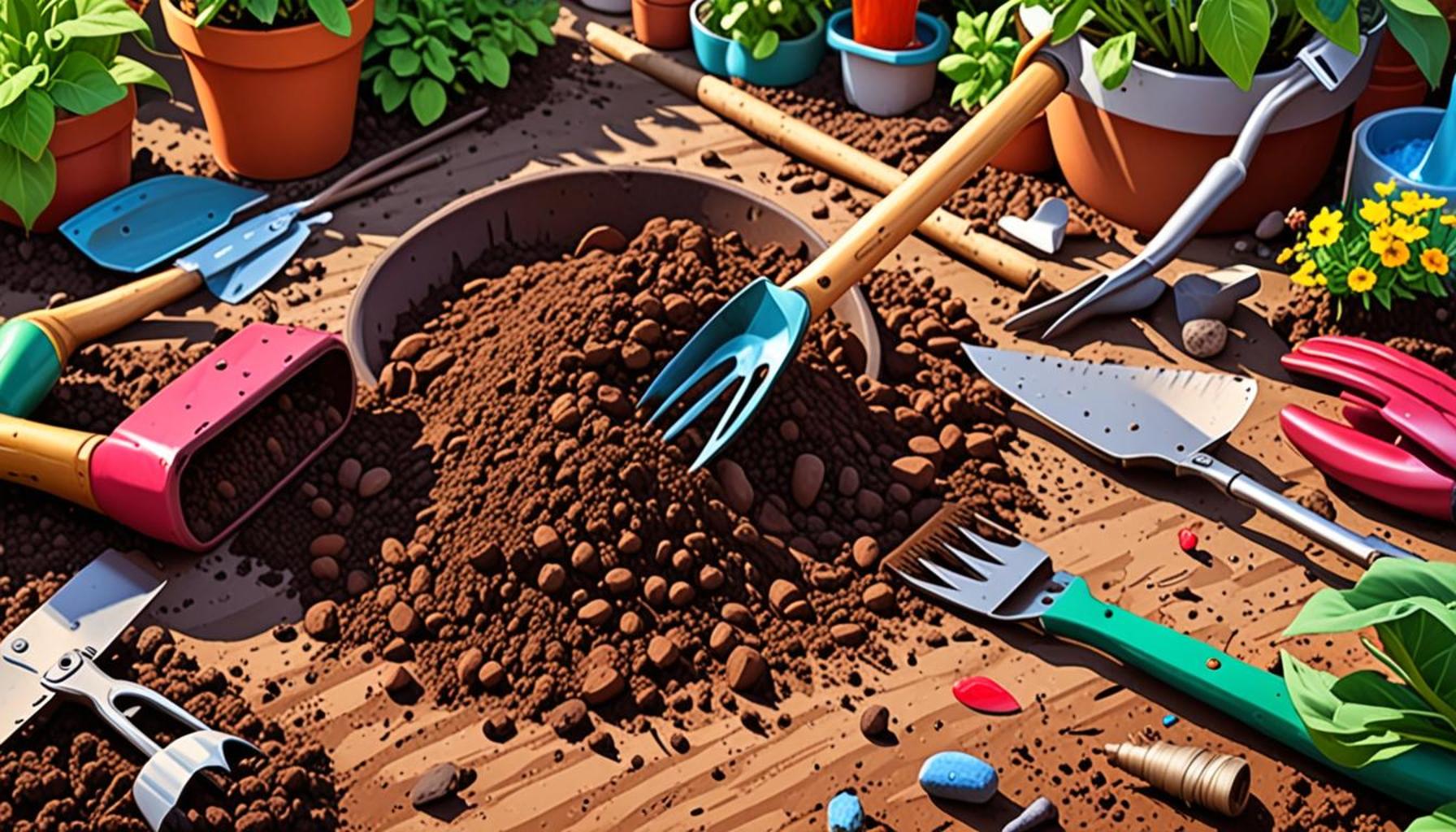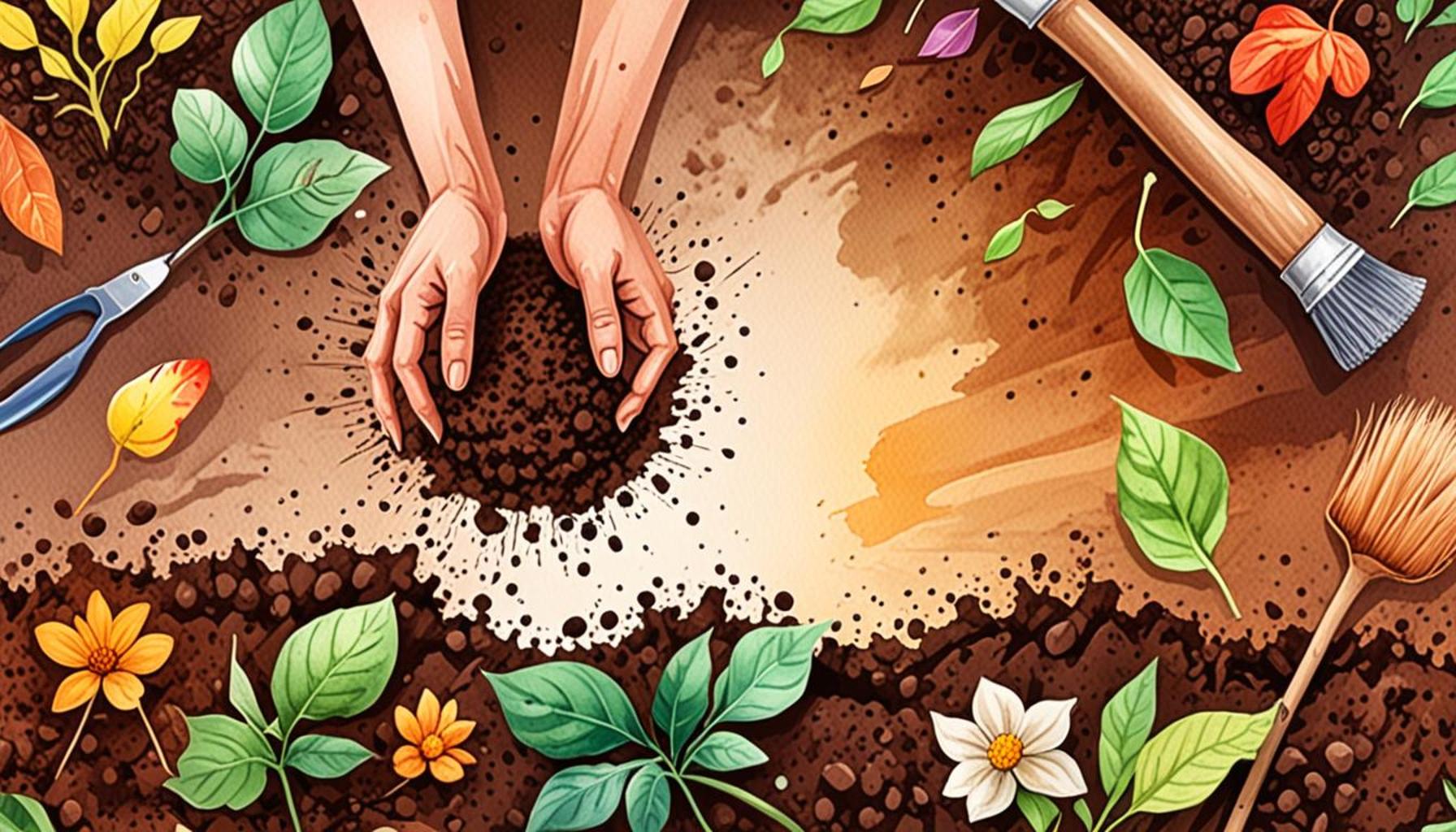Effective Soil Preparation Techniques for Home Gardening

Essential Techniques for Soil Preparation in Home Gardening
Soil is the very foundation of any thriving garden. Effective soil preparation can transform your gardening experience, leading to bountiful harvests and beautiful blooms. The importance of healthy soil cannot be overstated; it serves as the bedrock for plant health, influencing everything from nutrient uptake to moisture retention. By diving deeper into the essentials of soil management, you can create an optimal environment for your plants.
Understanding the role of soil nutrients, texture, and structure is crucial. Nutrients such as nitrogen, phosphorus, and potassium play vital roles in plant growth. However, these elements must be present in the right proportions for plants to thrive. To optimize your soil, consider exploring:
- Soil Testing: Analyze your soil to determine pH levels and nutrient content. Most local agricultural extensions offer soil testing services that can provide you with a detailed breakdown. Understanding your soil’s pH—ideally between 6.0 and 7.5 for most vegetables—can help you tailor your amendments.
- Amendment Techniques: Incorporate organic matter like compost to enrich soil quality. Compost not only adds vital nutrients but also enhances the soil structure, improving aeration and moisture retention. You can create your own compost using kitchen scraps and yard waste, making it an environmentally-friendly option.
- Tilling Methods: Learn the benefits of tilling versus no-till gardening. Tilling can aerate the soil and mix in amendments, but over-tilling can disrupt soil structure and harm beneficial organisms. No-till gardening preserves the natural soil environment and can lead to healthier ecosystems below the surface.
These methods are not just trends; they are essential practices that can enhance the health of your plants. Utilizing effective soil preparation techniques creates an environment where seeds can sprout, grow, and flourish. Agricultural scientists advocate for practices like cover cropping, which protects the soil during off-seasons, improves soil structure, and reduces erosion.
As we delve deeper, you’ll discover practical tips and step-by-step processes to prepare your garden soil. For instance, when preparing to plant, consider double digging—a method that involves digging two spade depths and incorporating compost at the bottom. This technique not only improves drainage but also provides plants with direct access to nutrients. Whether you’re a novice or an experienced gardener, mastering these techniques can elevate your gardening game significantly.
In the realms of urban gardening, where space might be limited, raised beds filled with carefully prepared soil can provide an ideal solution. These beds can be customized with specific soil blends to nurture growth for particular plants, making them a favorite among home gardeners across the United States.
In conclusion, understanding and nurturing your soil is not just the starting point of a garden; it is an ongoing relationship that fosters growth and beauty. Embarking on this journey of soil preparation can open many doors to gardening success.
LEARN MORE: Click here to enhance your gardening knowledge
Getting Started: Analyzing and Enhancing Your Soil
To effectively prepare your soil for home gardening, the first step lies in understanding what you’re working with. Soil testing is a fundamental practice that cannot be overlooked. You may be surprised to learn that soil might contain variable pH levels and nutrient deficiencies that are undetectable to the naked eye. By utilizing a soil testing kit or seeking assistance from local agricultural services, you can identify the properties of your soil. This information is critical, as it allows you to understand which soil amendments will be necessary to cultivate healthy plants.
Once you’ve obtained your soil analysis results, it’s time to focus on improving those nutrient levels. The incorporation of organic material is one of the most effective techniques for enriching your soil. Here’s a quick look at various amendments you can consider:
- Compost: Often called ‘black gold’, compost is rich in nutrients and beneficial microorganisms. Adding compost to your garden not only enhances nutrient levels but also improves soil structure, which is vital for plant growth.
- Manure: Well-rotted animal manure is an excellent source of nitrogen and other essential nutrients. Make sure to use it in moderation and ensure it’s fully composted to avoid burning your plants.
- Peat Moss: If your soil is too sandy or lacks moisture retention, introducing peat moss can enhance moisture retention and add necessary acidity for certain plants.
- Bone Meal and Blood Meal: These amendments can boost phosphorus and nitrogen levels, vital for promoting root growth and overall plant vigor.
Another intriguing technique is the practice of cover cropping, especially for those gardeners who wish to preserve soil health over the winter months. By planting cover crops like clover or vetch, you can prevent soil erosion, improve soil structure, and even fix nitrogen levels, readying your garden for a fruitful season ahead.
Additionally, understanding soil texture is crucial. Soil is composed of sand, silt, and clay, and the ratio of these components significantly affects drainage and fertility. Sandy soils drain quickly but often lack nutrients, while clay soils retain moisture but can become compacted. For optimal results, you may want to mix soil types or add amendments that enhance the structure. For instance, adding sand to clay can improve drainage, while incorporating clay into sandy soils can help them retain moisture.
As you start your gardening journey, consider experimenting with no-till gardening. This method minimizes soil disturbance, which fosters beneficial microbial life. By leaving the soil structure intact, you create a thriving habitat that supports ongoing natural growth and reduces the need for chemical fertilizers.
In conclusion, effective soil preparation is the cornerstone of a successful gardening endeavor. By investing time in analyzing and enhancing your soil, you establish the ideal foundation for your plants. This early effort promises to yield rich rewards, transforming your home garden into a vibrant and productive oasis.
| Technique | Advantages |
|---|---|
| Soil Testing | Helps to determine nutrient levels and pH, allowing for the effective addition of fertilizers and amendments, leading to healthier plants. |
| Organic Matter Incorporation | Improves soil structure and fertility, enhances microbial activity, and increases moisture retention for vigorous plant growth. |
In the realm of home gardening, the application of effective soil preparation techniques cannot be overstated. Implementing regular soil testing is essential for understanding the unique needs of your garden’s soil, ensuring that you apply only the necessary amendments. With precise adjustments, plants can thrive, showcasing lush growth and vibrant colors.Additionally, incorporating organic matter into the soil is a game-changer. This technique not only enhances nutrient availability but also enriches the soil’s biodiversity, creating a robust ecosystem that supports plant health. The result? A flourishing garden that can withstand the trials of pests and environmental stress while yielding abundant, high-quality produce. The journey of effective soil preparation leads to rewarding gardening experiences and bountiful harvests.
DIVE DEEPER: Click here to discover essential tools
Advanced Techniques for Soil Preparation
Now that you’ve conducted a soil analysis and enriched it with essential amendments, it’s time to explore more advanced techniques that can further elevate your home gardening experience. These methods are designed to create an ecosystem that promotes robust plant growth, sustainability, and environmental health.
One such technique is mulching. Mulch serves multiple purposes: it regulates soil temperature, conserves moisture, suppresses weeds, and even adds organic matter to the soil as it decomposes. Organic mulches, such as straw, wood chips, or shredded leaves, are preferable as they naturally break down and enrich the soil over time. In regions with extreme weather, a thick layer of mulch can protect your plants from freezing temperatures or scorching heat, acting almost like a protective blanket.
Another innovative approach is called soil layering, or “lasagna gardening.” This technique involves creating a layered compost system by alternating various organic materials. Rich materials like kitchen scraps, grass clippings, and dried leaves can be piled in alternating layers to build a nutrient-rich base. This method not only helps with aeration but also enhances the microbial life within the soil, which is crucial for nutrient cycling and overall health.
Additionally, consider implementing the three sisters planting technique, which is a time-honored method employed by Native American communities. This companion planting strategy combines corn, beans, and squash to create a synergistic relationship. Corn provides natural support for the climbing beans, while the beans fix nitrogen in the soil, benefiting the corn. Squash, with its broad leaves, shades the soil, allowing moisture retention and reducing weed growth. Such interactions optimize resource use, illustrating the interconnectedness of plant systems.
Understanding the impact of soil biology is essential for any gardener. Soil is not merely a medium for plants; it houses an entire ecosystem of microorganisms, fungi, and earthworms. Introducing products like mycorrhizal fungi can enhance plant health significantly. Mycorrhizal fungi form symbiotic relationships with plant roots, increasing nutrient uptake (especially phosphorus) while improving soil structure. This connection can be particularly advantageous for gardens with poor nutrient conditions.
It’s also important to practice crop rotation to maintain soil health over multiple growing seasons. By rotating crops annually, you can minimize pest infestations and nutrient depletion. Different crops require varying nutrients, so rotating them allows for more balanced soil fertility. For instance, following heavy feeders like tomatoes with light feeders such as lettuce can help maintain nutrient levels without needing excessive amendments.
Lastly, consider the benefits of incorporating permaculture principles in your garden design. This holistic approach focuses on creating a self-sustaining ecosystem by utilizing natural patterns and relationships. By planning your garden layout with permaculture in mind, you can maximize space efficiency, enhance biodiversity, and reduce the need for synthetic fertilizers and pesticides.
Incorporating these advanced soil preparation techniques does require some research and planning, but the rewards are a thriving and productive garden space. By embracing these methods, you contribute to a sustainable gardening practice while nurturing a haven of greenery that flourishes season after season.
DIG DEEPER: Click here for effective irrigation techniques
Conclusion
In summary, effective soil preparation techniques are the cornerstone of successful home gardening. By starting with a thorough soil analysis, you equip yourself with the knowledge needed to customize your garden’s needs, ensuring vibrant plant growth and optimal yields. Enhancements such as organic amendments, layering, and mulching not only improve soil health but also foster an environment conducive to sustainability and productivity.
Advanced methods like the three sisters planting and the incorporation of mycorrhizal fungi showcase the intricate relationships between plants and soil organisms, emphasizing the importance of biodiversity. Techniques like crop rotation safeguard against nutrient depletion and pest issues, while embracing permaculture principles can transform your garden into a self-sustaining ecosystem that reduces reliance on fertilizers and pesticides.
As you delve deeper into these practices, consider how each technique can work synergistically, creating a balanced environment that not only supports your plants but also contributes positively to the surrounding ecosystem. Whether you’re a novice gardener or a seasoned green thumb, investing time in effective soil preparation will revolutionize your gardening experience and yield fruitful harvests.
For those looking to expand their gardening prowess, further research into local soil conditions, climate patterns, and specific plant requirements can yield even more insights. With the right knowledge and techniques, your garden can become a flourishing oasis, providing not just food and beauty but also a deeper connection to the land. Happy gardening!


